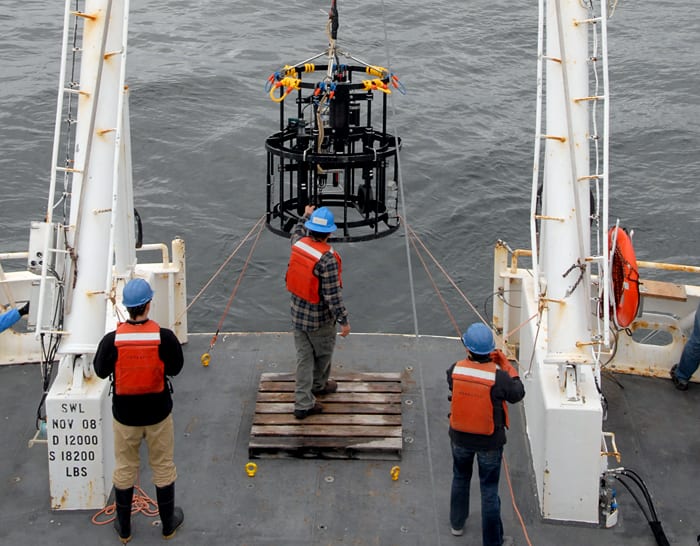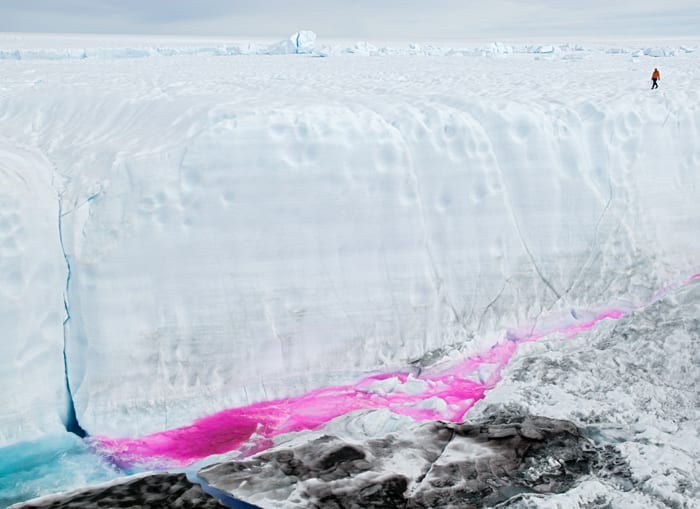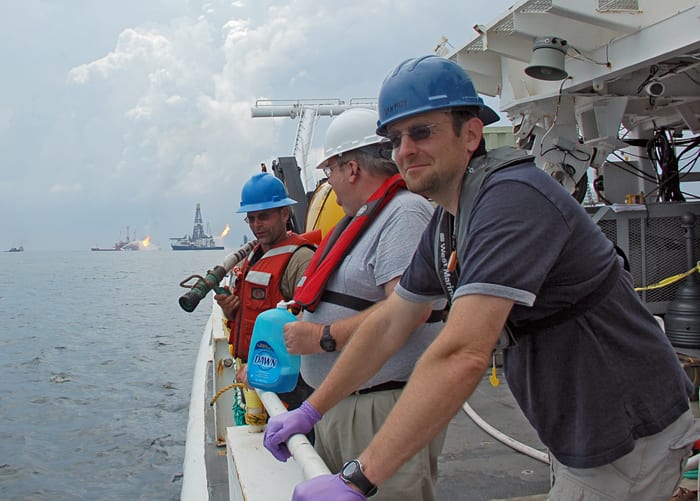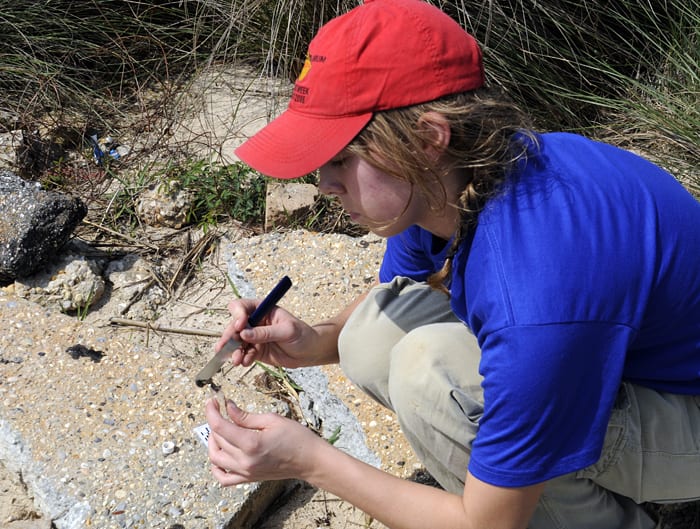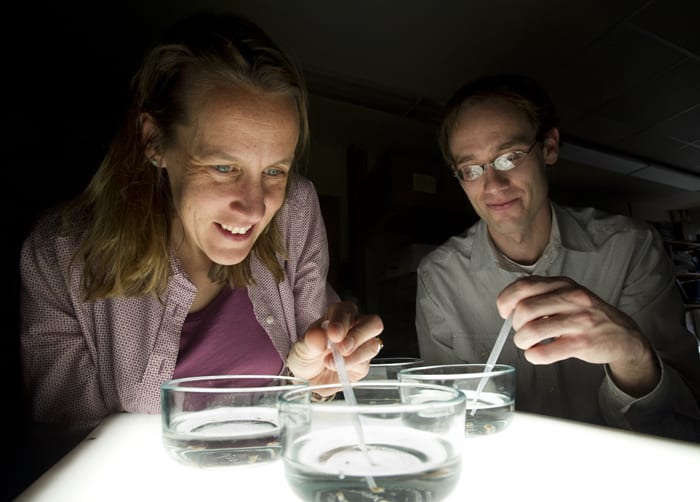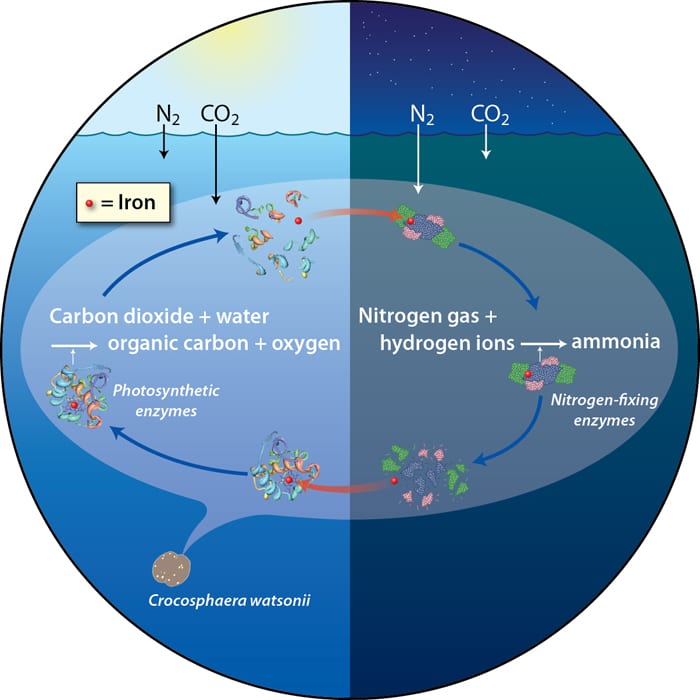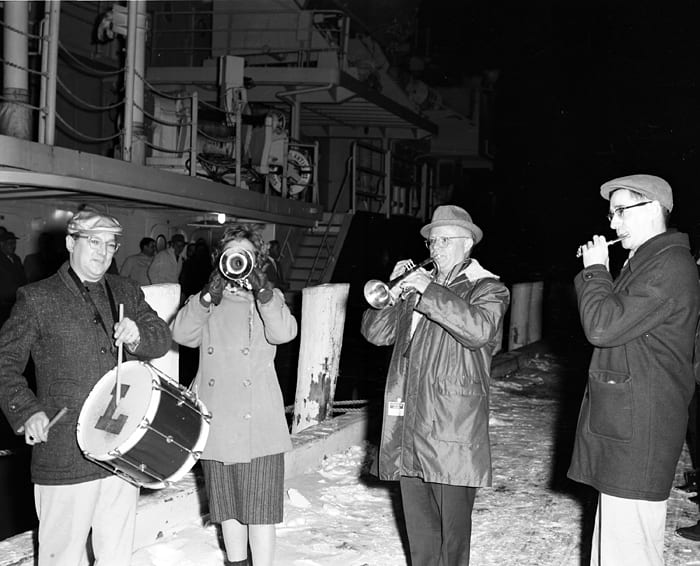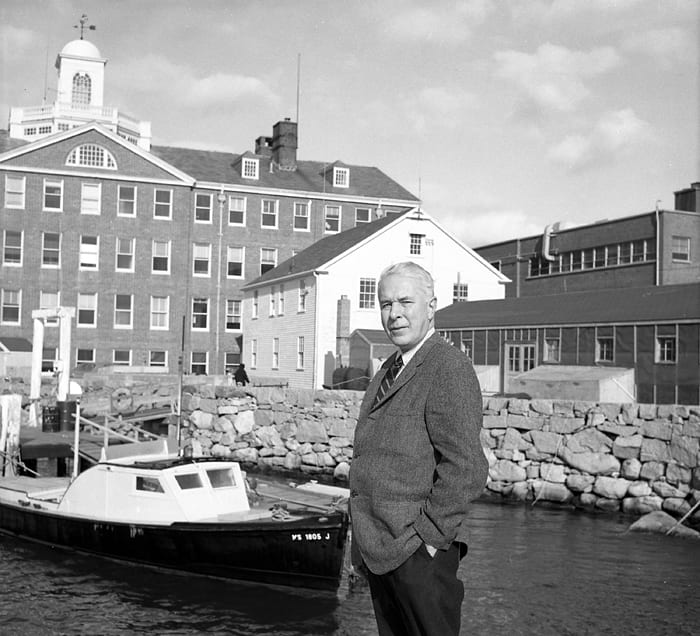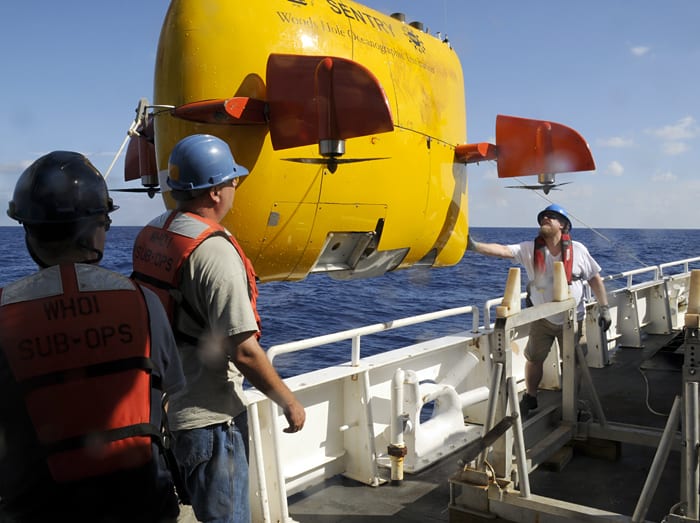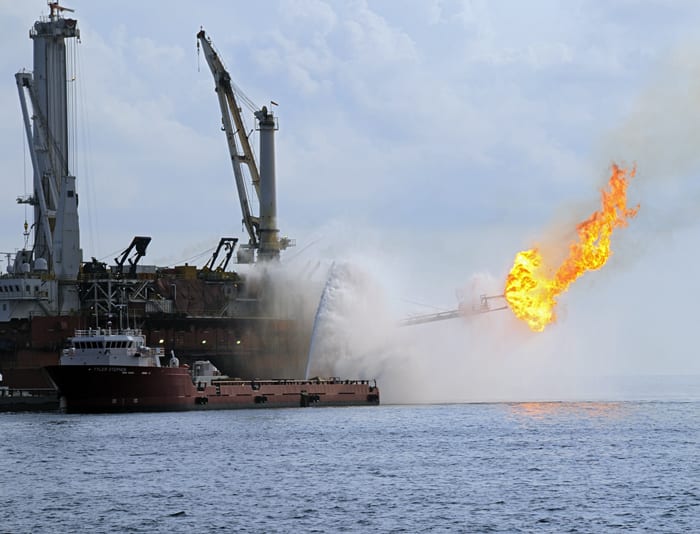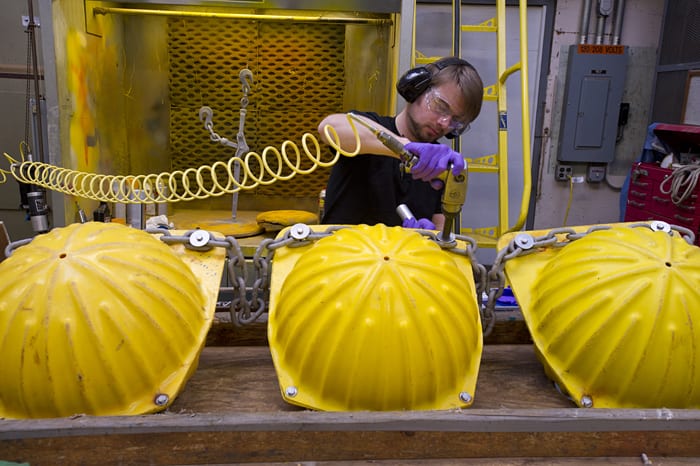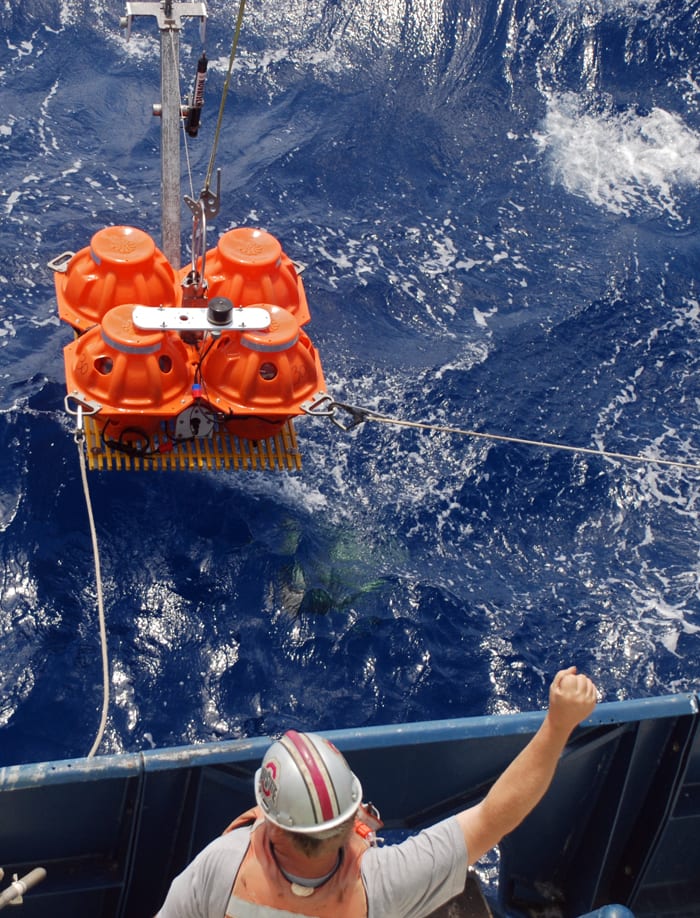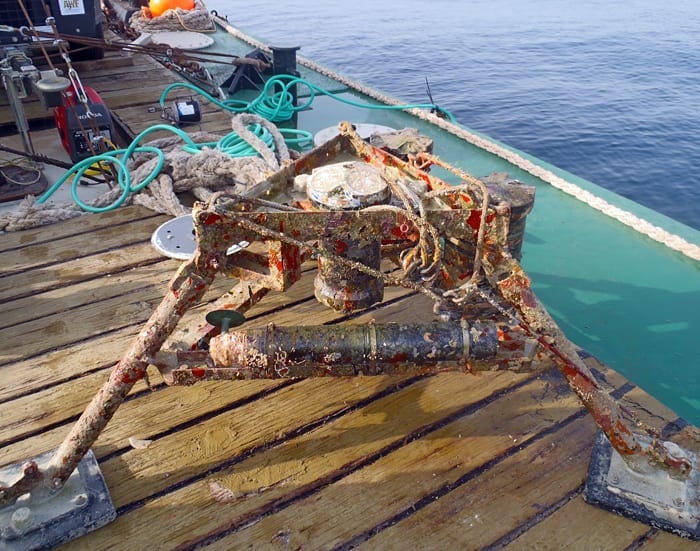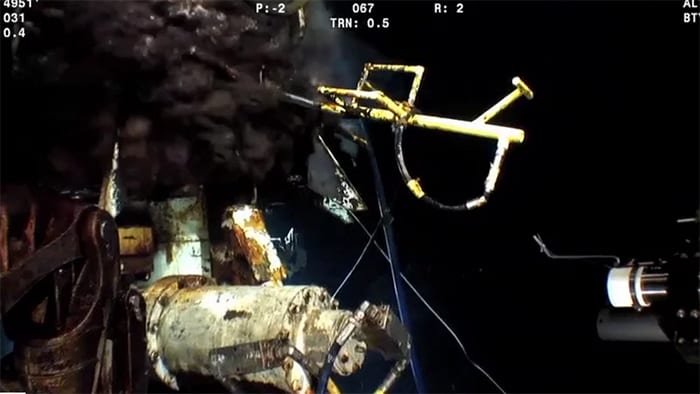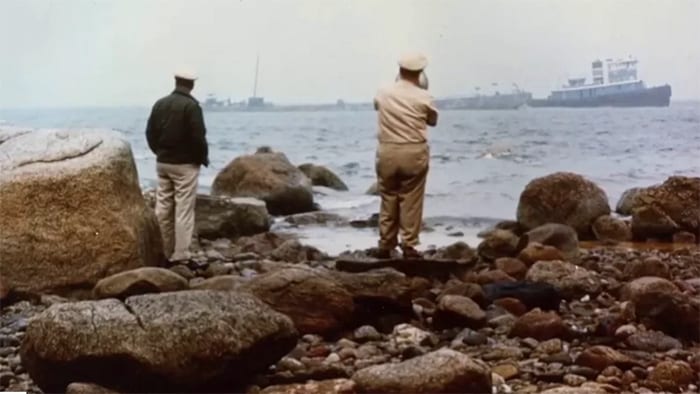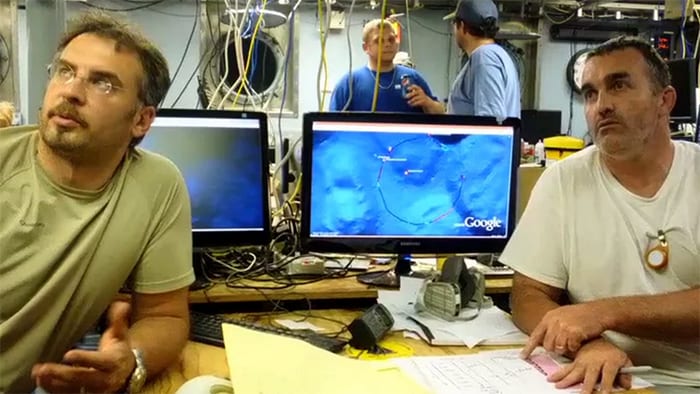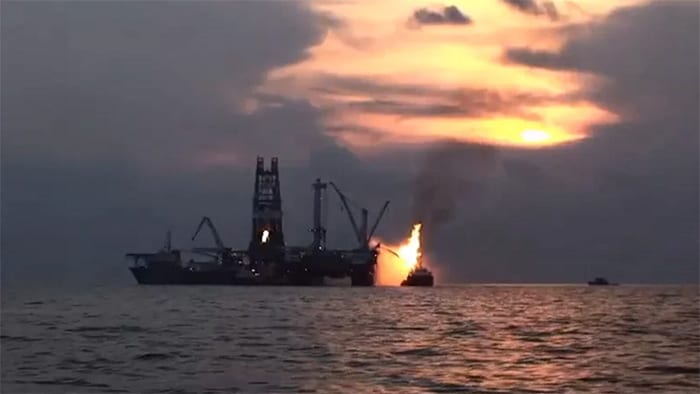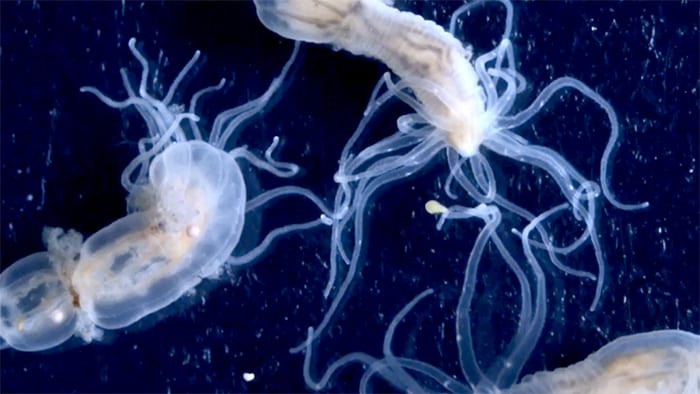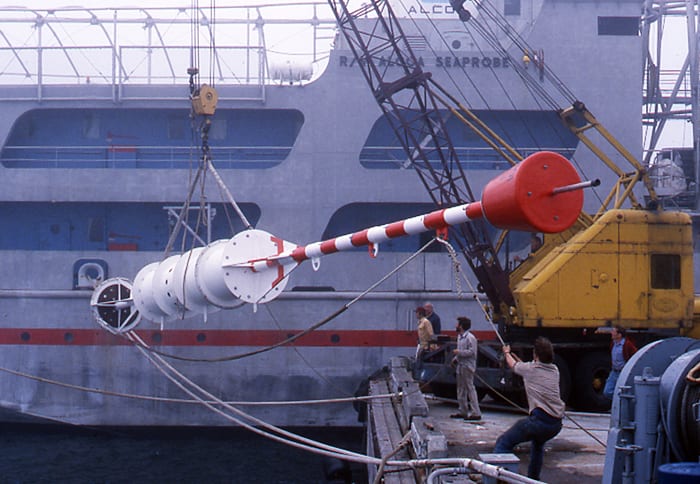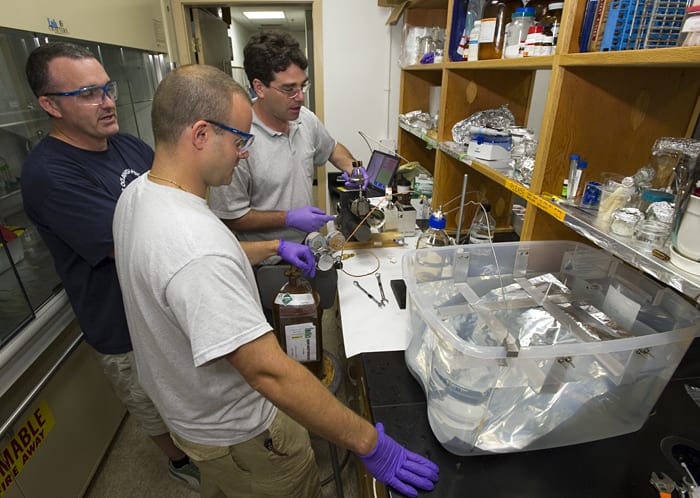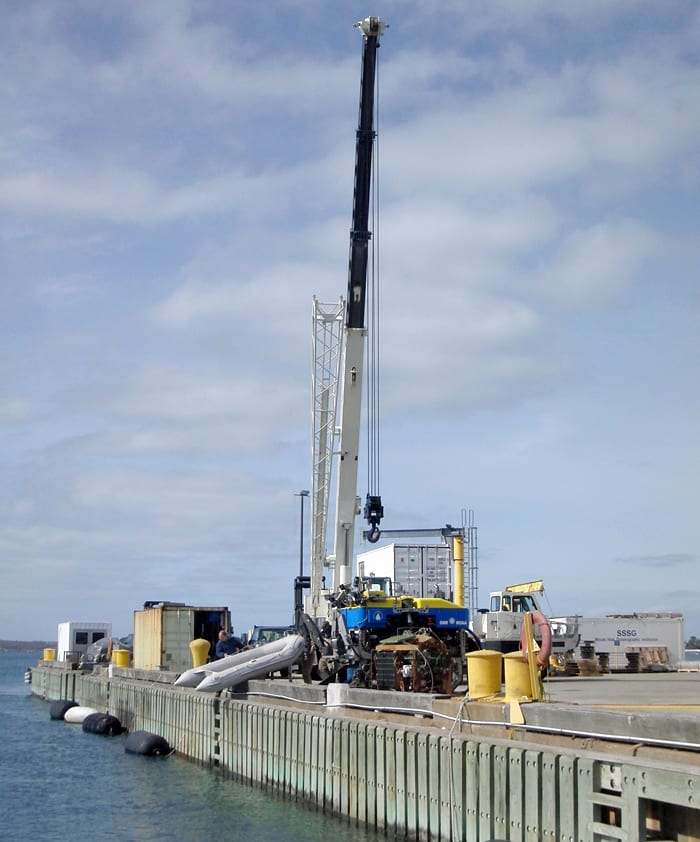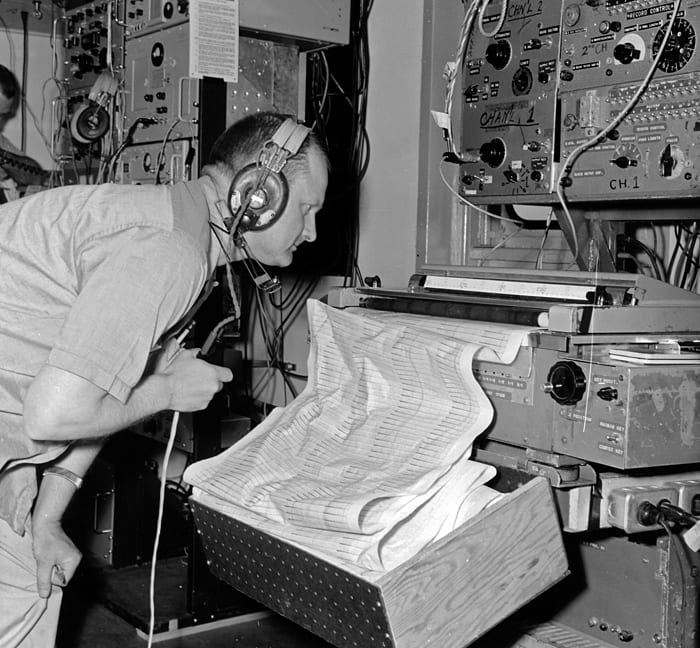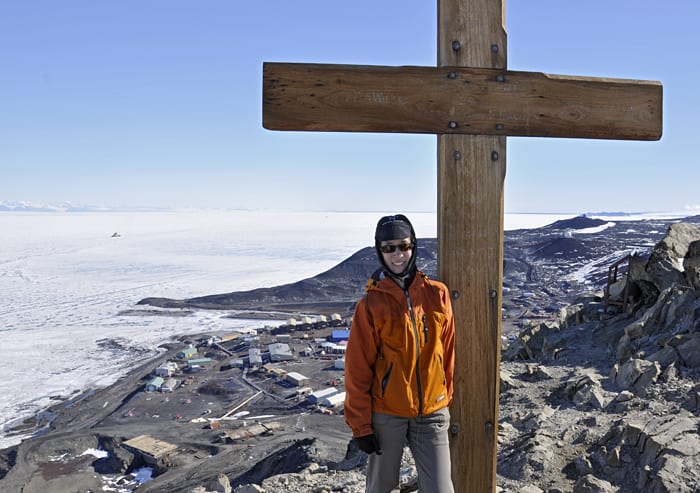Multimedia Items
Krill, Get Ready for Your Close-Up
During a cruise on the R/V Endeavor in fall, 2010, Bosun Patrick Quigley deploys the Video Plankton Recorder (VPR), assisted by Joint Program students Nick Woods (left) and Wu-Jung Lee. The…
Read MoreRed River Valley
Summertime meltwater forms lakes on Greenland’s ice sheet that suddenly disappear. WHOI glaciologist Sarah Das showed why—the water’s weight cracks the ice, draining to bedrock and lubricating the ice’s seaward…
Read MoreOn the Scene
From the deck of the research vessel Endeavor, WHOI chemist Ben Van Mooy (right) and others survey the scene near the burning Deepwater Horizon oil rig in the Gulf of…
Read MoreA Day at the Beach
In April, Coastal Ocean Institute director Chris Reddy returned to the Gulf of Mexico with research assistant Catherine Carmichael (above). The pair visited several beaches around the Gulf to collect…
Read MoreUsing Tiny Animals to Study a Big Problem
Biologist Ann Tarrant and postdoc Adam Reitzel examine tiny starlet anemones (Nematostella vectensis, the tan blobs visible in the dishes) that they culture. The anemones, from salt marshes all along…
Read MoreRecycling in the Ocean
Iron is essential for life, but is remarkably scarce in the ocean. WHOI scientists led by biogeochemist Mak Saito recently discovered that a key marine bacterium, Crocosphaera watsonii, may have…
Read MoreAnd the Band Played On
It’s a long-standing tradition for the Woods Hole Marching and Chowder Society to welcome WHOI ships and their crews back from long voyages. Welcoming Atlantis II to Woods Hole for the…
Read MoreColumbus Iselin, WHOI’s second director
Columbus O’Donnell Iselin, on the WHOI dock in about 1964, with WHOI’s original building, the cupola-topped Bigelow Lab, in the background. Iselin served as WHOI’s second director, from 1940 to…
Read MoreSentry on Patrol
In June 2010, aboard R/V Endeavor, WHOI engineers Al Duester (right) and Andy Billings (center) helped recover the autonomous underwater vehicle (AUV) Sentry after a dive in the Gulf of…
Read MoreFlaring off in the Gulf
The recovery vessel Q4000 burns off gas after receiving oil from a “choke line” plumbed into the blowout preventer of the Deepwater Horizon in June 2010, some two months after…
Read MoreHardhats at Work
Engineering assistant Matthew Adams prepares “hardhat” floats for use in an upcoming project in the Lofoten Basin between Iceland and Norway in the far northern Atlantic. WHOI physical oceanographer Fiamma…
Read MoreOBS Recovery
Crew aboard the R/V Atlantis recover an ocean bottom seismometer (OBS) during a January 2009 expedition. The sensitive instruments are deployed on the seafloor to record ground movements from undersea…
Read MoreA Coating of Many Colors
After a year in the Red Sea, this tripod is sporting a colorful growth of coral. It was recovered by John Kemp and Jim Ryder during a cruise led by…
Read MoreSampling the Source
Science in a Time of Crisis Part 3: Sampling the Source After measuring the flow rate of the fluid spewing out of the broken wellhead, the next step for WHOI…
Read MoreOil Spill Pioneers
Science in a Time of Crisis Part 1: Oil Spill Pioneers On Sept. 16, 1969, the barge Florida ran aground off Cape Cod, rupturing its hull and spilling more than…
Read MoreSearching for the Plume
Science in a Time of Crisis Part 4: Searching for the Plume Almost as soon as the spill began, speculation abounded about the fate of the oil. The slick on…
Read MoreHow Much Oil?
Science in a Time of Crisis Part 2: How Much Oil? One of the most important questions arising from the Deepwater Horizon oil spill was exactly how much oil was…
Read MoreTracking the Currents
Concern about the impacts of the Deepwater Horizon oil spill centered on the northern Gulf of Mexico, but some feared that oil might also reach the U.S. East Coast, via…
Read MoreAssessing the Impacts
Science in a Time of Crisis Part 6: Assessing the Impacts Soon after the Deepwater Horizon blowout, scientists began exploring how the disaster might affect the Gulf ecosystem. Oil-drenched birds…
Read MoreSparring with JASIN
Between July and September of 1978 more than 50 teams of scientists from nine countries, including physical oceanographers from WHOI, participated in JASIN, the Joint Air-Sea Interaction Experiment. The experiment…
Read MoreTapping a Small, High-Pressure Keg
WHOI researchers (l to r) Chris Reddy, Sean Sylva, and Jeff Seewald prepare to tap into the pressurized chamber holding material collected from the damaged wellhead at the Deepwater Horizon…
Read MoreReady to Launch
Team members ready the remotely operated vehicle (ROV) Jason for testing off the WHOI dock in March 2011 in preparation for an upcoming expedition. Engineers in the National Deep Submergence…
Read MoreOne Man’s Contribution
Research specialist and hydro-acoustics engineer Sydney “Bud” Knott (above) is considered the father of modern echo-sounding. In the 1950s, he was the principal developer, with Warren Witzell, of the precision…
Read MoreTop of the Hill, Bottom of the World
Biogeochemist Phoebe Lam took advantage of clear conditions to climb Observation Hill, adjacent to McMurdo Station in Antarctica. Lam and her team are working with three other institutions to determine the…
Read More
